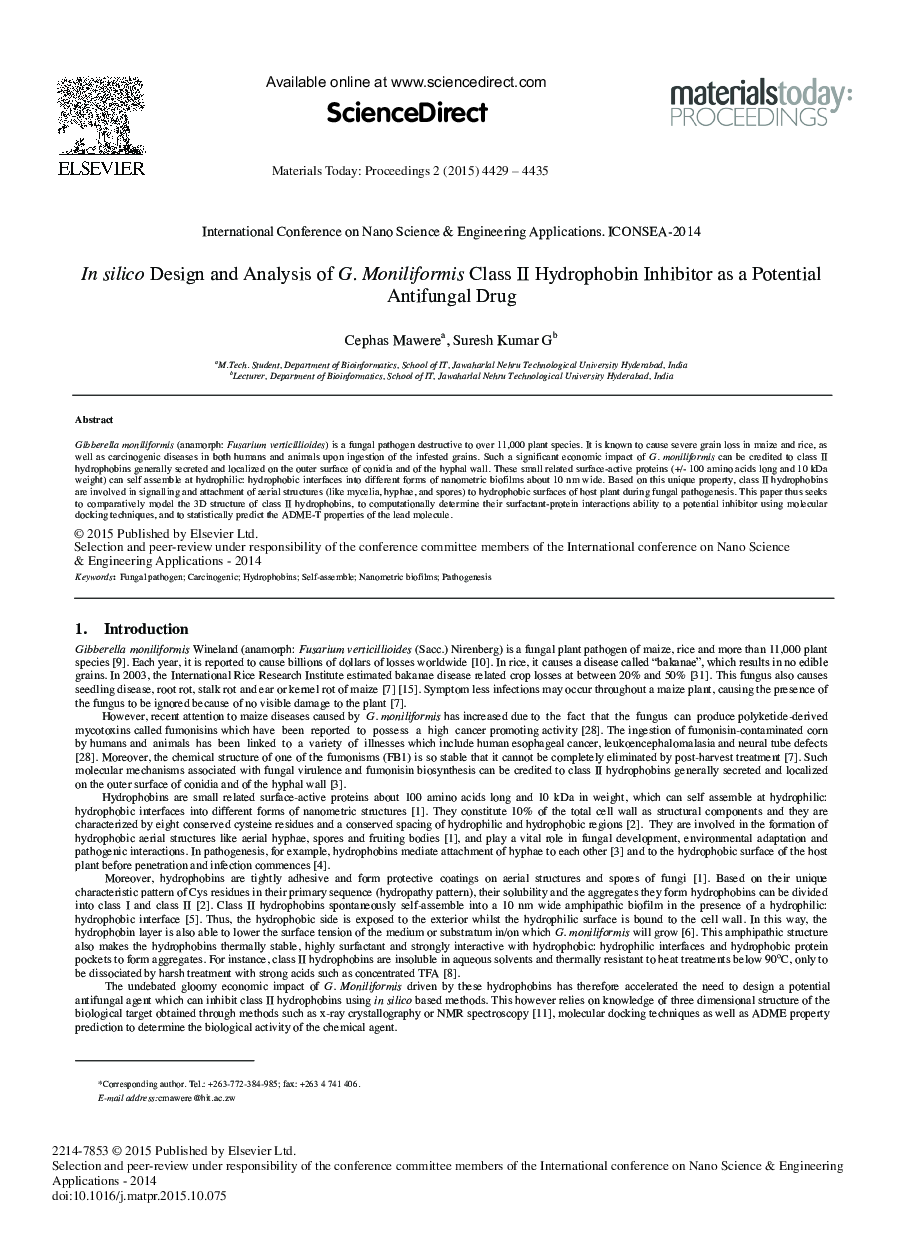| کد مقاله | کد نشریه | سال انتشار | مقاله انگلیسی | نسخه تمام متن |
|---|---|---|---|---|
| 1631001 | 1006615 | 2015 | 7 صفحه PDF | دانلود رایگان |
عنوان انگلیسی مقاله ISI
In silico Design and Analysis of G. Moniliformis Class II Hydrophobin Inhibitor as a Potential Antifungal Drug
دانلود مقاله + سفارش ترجمه
دانلود مقاله ISI انگلیسی
رایگان برای ایرانیان
کلمات کلیدی
موضوعات مرتبط
مهندسی و علوم پایه
مهندسی مواد
فلزات و آلیاژها
پیش نمایش صفحه اول مقاله

چکیده انگلیسی
Gibberella moniliformis (anamorph: Fusarium verticillioides) is a fungal pathogen destructive to over 11,000 plant species. It is known to cause severe grain loss in maize and rice, as well as carcinogenic diseases in both humans and animals upon ingestion of the infested grains. Such a significant economic impact of G. moniliformis can be credited to class II hydrophobins generally secreted and localized on the outer surface of conidia and of the hyphal wall. These small related surface-active proteins (+/- 100 amino acids long and 10 kDa weight) can self assemble at hydrophilic: hydrophobic interfaces into different forms of nanometric biofilms about 10Â nm wide. Based on this unique property, class II hydrophobins are involved in signalling and attachment of aerial structures (like mycelia, hyphae, and spores) to hydrophobic surfaces of host plant during fungal pathogenesis. This paper thus seeks to comparatively model the 3D structure of class II hydrophobins, to computationally determine their surfactant-protein interactions ability to a potential inhibitor using molecular docking techniques, and to statistically predict the ADME-T properties of the lead molecule.
ناشر
Database: Elsevier - ScienceDirect (ساینس دایرکت)
Journal: Materials Today: Proceedings - Volume 2, Issue 9, Part A, 2015, Pages 4429-4435
Journal: Materials Today: Proceedings - Volume 2, Issue 9, Part A, 2015, Pages 4429-4435
نویسندگان
Cephas Mawere, Suresh Kumar G.,